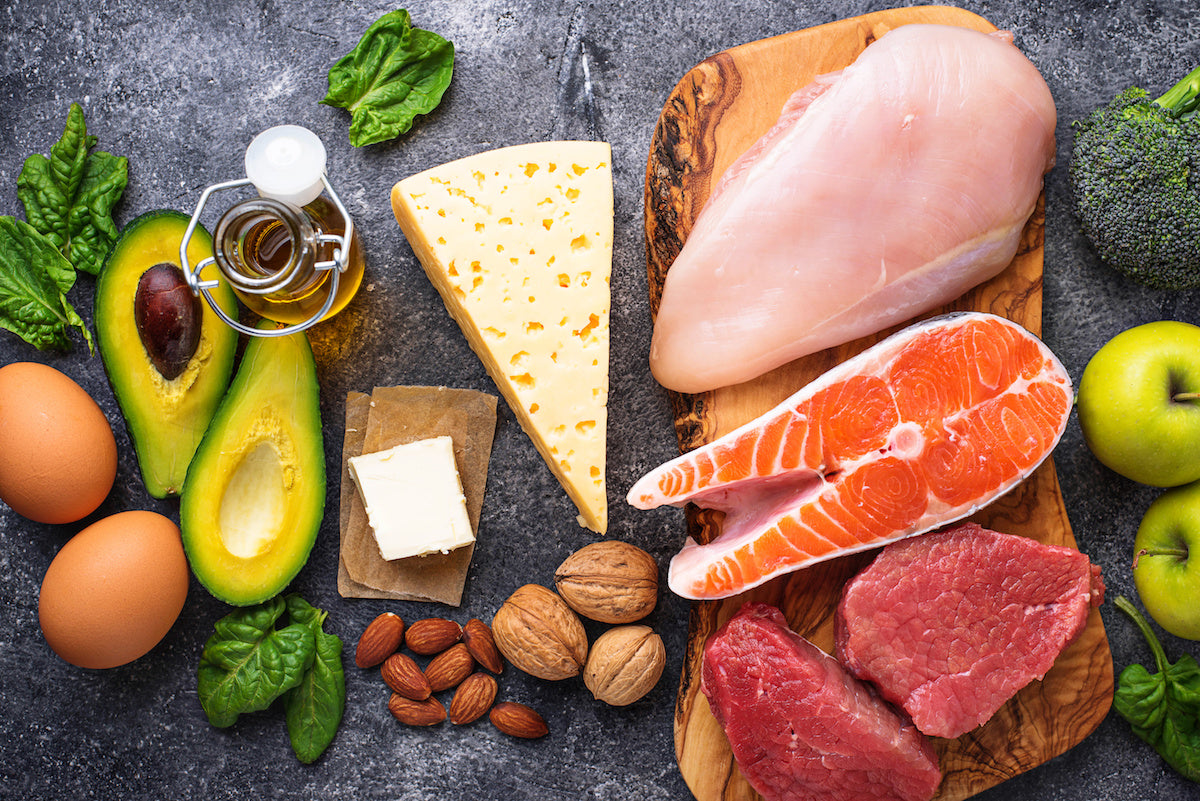How to Stick to Your Shape-Shifting Resolution
Holiday cheer combines food, drink and merriment from being with loved ones as well as giving/receiving gifts. It also tends to add a few more pounds to the few that likely arrived after Halloween and Thanksgiving.
And then comes January first. A fresh start. Resolutions. And the perennial fave is resolving to lose weight/get into shape. Gym memberships spike in January. People want to shape shift into something much more attractive and healthy.
If you are reasonably healthy and want to lose pounds and fat in a healthy way, consider a couple of diets that may work well for you. Keto and intermittent fasting.
The Keto diet is today’s Atkins at base. It restricts unhealthy carbs, in order to shift into fat burning via a process called ketosis. According to Josh Axe, DC, DMN, CNS, renowned natural health blogger, Josh Axe, DC, DMN, CNS, following the keto diet encourages your body to switch its fuel source to remain energized – changing sugar as the fuel source to fat as the fuel source, this results in not only loss of weight but shape shifting into a more desired physique as the fat melts away.
It’s so simple that it can be fun to do as opposed to the highly restrictive diets of yore that were tasteless and left you feeling empty, starved, unfulfilled. The days of “eating rabbit food” (eg, bland salads and rice cakes), to lose weight are thankfully over. The keto diet consists of two areas – reducing carbs (eliminating all white-flour/bleached processed flours such as pastries, breads, pastas), and raising consumption of healthy fats (such as those found in fish, avocados, eggs and nuts) and moderate to slightly high protein. More specifically, says Dr. Axe, your daily intake of macronutrients that would be considered ketogenic would be 75% from fats, 5% carbohydrates, and 20% protein. Keto diet is not a “high protein” low-carb diet; this type of diet focuses on daily intake of approximately 35% protein.
Bad carbs flood your body with sugars that serve as fuel. If you aren’t expending energy via exercise, those sugars hang around, doing damage. So, by cutting off the sugar-carb supply, your body then needs to focus on finding another source of fuel that is often readily available: fat. This switch causes the creation of a byproduct, ketones. Ketosis results when there is a certain amount of ketones in the body. Ketosis results in a noticeable loss of weight that is not a hardship to achieve. Dr. Axe calls ketones an “alternate, efficient and superior energy source” over glucose. He adds, “most organs, including your brain, thrive on ketones.” Through a keto diet, the liver oxidizes fatty acids that produce three types of ketones, acetone, acetoacetate and beta-hydroxybutyrate. Further, according to one study, when more ketones are produced and available as an energy source, they replace glucose, which also spares protein from being broken down.
Eating a ketogenic diet has other benefits besides helping you to get into great physical shape (assuming exercise that combines endurance and resistance activities). It can help reduce inflammation, supports healthy blood sugar, improves cognitive and digestive function and supports metabolic health.
Intermittent Fasting
Intermittent fasting primarily means eating, fasting, eating. There are different ways to do this, but most people seem to be able to stick with eating in an eight-hour window (reasonable calories, nothing excessive), and not eating for the 16 hours in between. Here’s what happens – between the times you eat (could even be a half a slice of cheese), insulin levels decline and fat cells release sugar they store for energy. The more sugar you eat, the more insulin is needed to shuttle the sugar into the cells. The less sugar, the less insulin is needed, giving your pancreas a bit of a break. Intermittent fasting allows the insulin levels to reduce to the point where the body burns more fat as fuel.
Now – imagine the results of combining intermittent fasting with the keto diet!
Key Hormones in Weight Management
When you alter your manner of eating, you also tend to balance certain hormones – leptin and ghrelin -- that affect diet and cravings. They are the opposite in the sense that leptin is the hormone that controls hunger and ensures appetite doesn’t rollercoaster. Ghrelin is the “feed me now and don’t stop” hormone.
Leptin levels decrease when incoming calorie amounts are reduced while burned calories are increased via exercise. According to one study, “Weight gain results in an increased plasma leptin level, which elicits a biologic response characterized in part by a state of negative energy balance. Weight loss among both lean and obese subjects results in decreased plasma levels of leptin.”
How Bergamonte® Can Help
The new and improved Bergamonte® bergamot phenolic extract contains compounds such as vitamin C, pectins and bergamot pulp that were not present in the original version. The new Bergamonte has been studied for its role in promoting metabolic health. It has been shown in a study to have significant advantages in weight management factors than its predecessor. The study comprised three groups – a placebo group, those taking 650 mg Bergamonte and a third group taking twice that amount, or 1300 mg.
At the end of the study, the 1300 mg group lost nearly 15% weight, while the 650 mg group lost 10.% The placebo group only lost approximately 2.8%. Leptin levels in the placebo group were 1.36%, compared to 12.30% in the 650 mg group and 21.36% in the 1300 mg group. Ghrelin levels were reduced by -0.61% in the placebo group, -6.89% in the 650 mg group and -14.90% in the 1300 mg group.
Remember – the Keto diet combined with intermittent fasting is not a short-term “diet” but rather a healthy lifestyle. Adding Bergamonte among other supplements such as a high-quality multi, will help you gain more with this lifestyle that helps you lose more.

